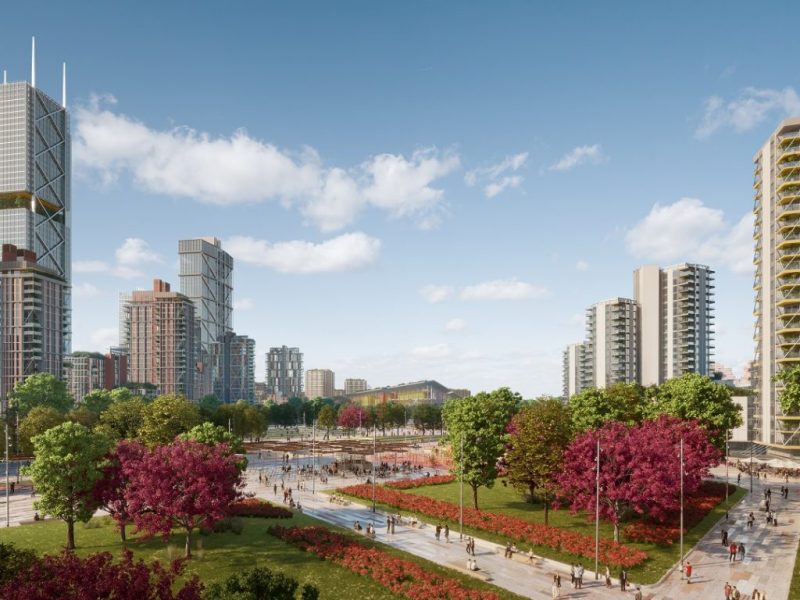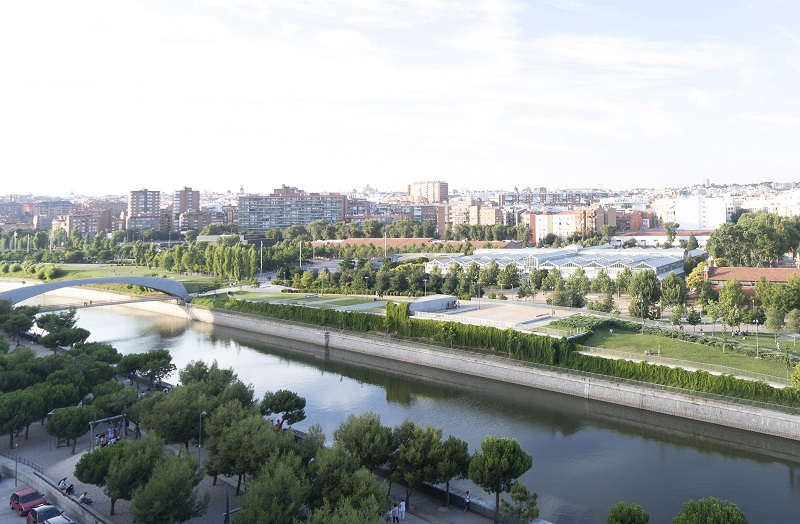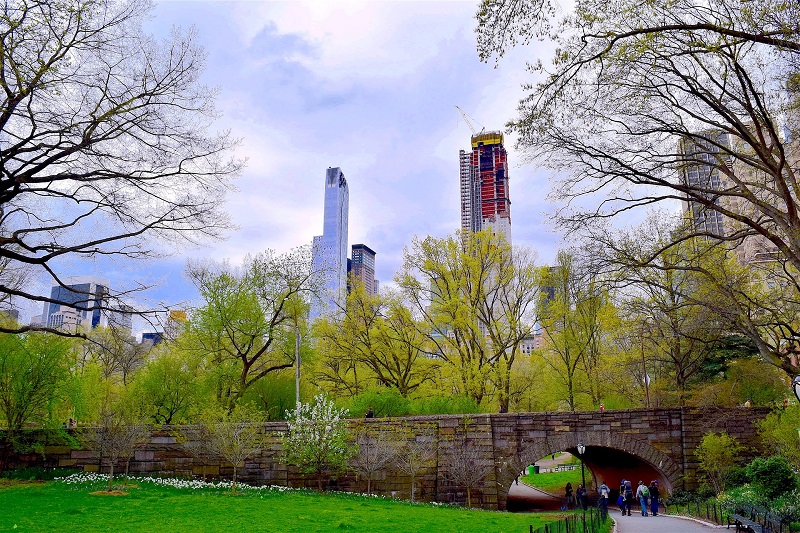6 May 2020
for Madrid Nuevo Norte


Step out from the brand-new and renovated Chamartín Station or one of the office buildings in the new CBD to stroll through an exceptional green area. Have lunch or read a book under the shade of trees, bring time to a standstill for a few minutes in a green oasis amidst the hustle and bustle, surrounded by designer skyscrapers. Commuter and high-speed trains are continually passing several metres underground, although out of sight and out of mind. This is only one of many scenarios that will unfold every day in Madrid Nuevo Norte’s future Central Park.
To this day, Madrid has nothing comparable to the green lung that will be created near the future Central Business District. The Central Park will be a unique green area, not only for its location, urban landscape and surrounding skyscrapers but also its design and technical features, as it will be built over rail tracks.
The Central Park’s most unique feature is its purpose, closing the urban gap created by Chamartín Station’s rail yard, and the construction techniques to build one of the world’s largest decks over a railway infrastructure. The 13-hectare park will be built over several rail tracks that have existed for decades at Chamartín Station, which will continue to be in operation during the construction works.

This large urban park will continue to grow over a vast concrete deck. Will this mean that it will have scarce greenery or short trees? By no means, since the new green space will have trees up to 15 metres high in 1.5-metre deep fertile soil.
The depth is enough for large trees to grow deep roots, for instance, at the popular Salón de Pinos at Madrid Río. Indeed, Madrid Río is an excellent example of a public park built over a transport infrastructure; in this case, the M-30 ring road.
Given that Madrid already has parks built on human-made decks, what makes Madrid Nuevo Norte’s Central Park so unique? The answer is its mix of design and location, surrounded by the skyscrapers of the future CBD. A skyline reminiscent of the “central park” par excellence, New York’s Central Park, a space surrounded by an impressive skyline, brimming with life seven days a week, due, in part, to its proximity to residential and office buildings.

This park is novel in our environment in that it combines unparalleled access to the future Chamartín Station and is situated adjacent to southern Europe’s most modern business district. Furthermore, the park will house top-level cultural facilities.
Although the design has not yet been determined, we can advance that this massive green space will be made accessible for all citizens for their enjoyment. Indeed, it aims to become an iconic image of the city. All this means that Central Park will be a destination and a focal point unto itself for all Madrid residents and visitors once Madrid Nuevo Norte is completed.